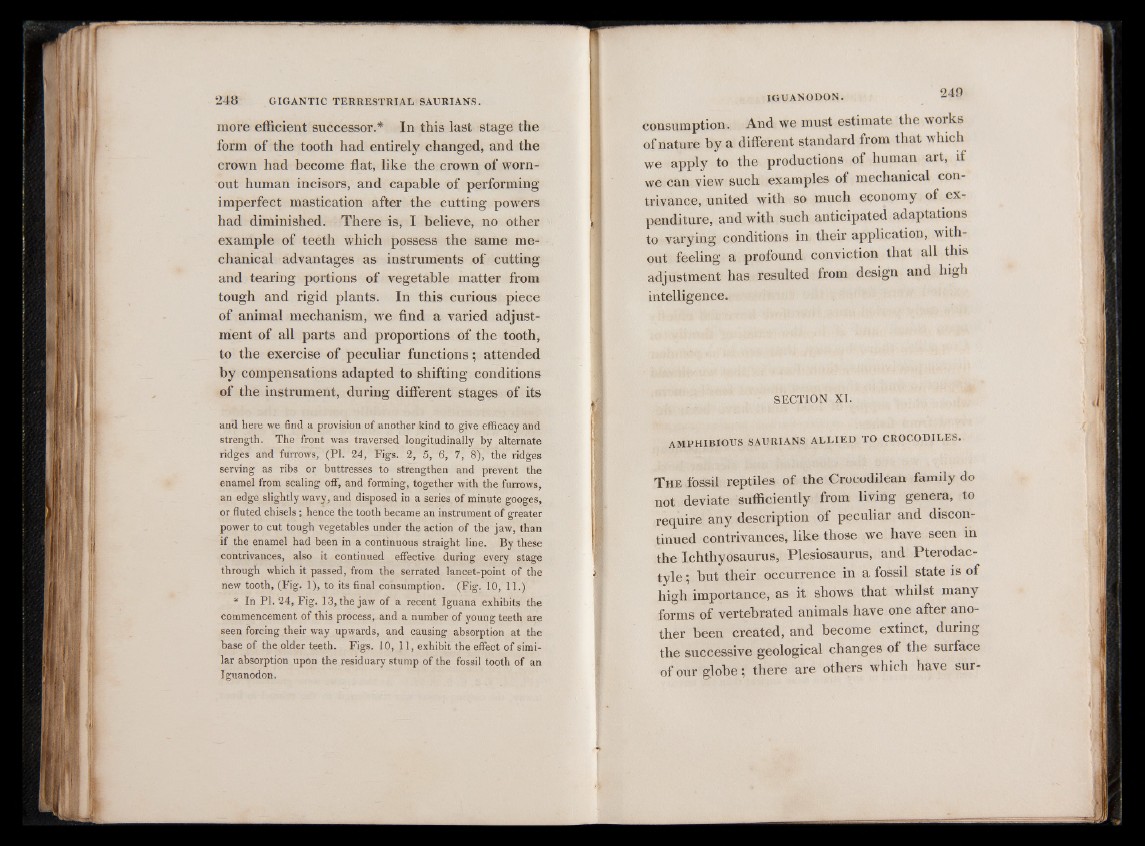
more efficient successor.* In this last stage the
form of the tooth had entirely changed, and the
crown had become flat, like the crown of worn-
out human incisors, and capable of performing
imperfect mastication after the cutting powers
had diminished. There is, I believe, no other
example of teeth which possess the same mechanical
advantages as instruments of cutting
and tearing portions of vegetable matter from
tough and rigid plants. In this curious piece
of animal mechanism, we find a varied adjustment
of all parts and proportions of the tooth,
to the exercise of peculiar functions; attended
by compensations adapted to shifting conditions
of the instrument, during different stages of its
and here we find a provision of another kind to give efficacy and
strength. The front was traversed longitudinally by alternate
ridges and furrows, (PI. 24, Figs. 2, 5, 6, 7, 8), the ridges
serving as ribs or buttresses to strengthen and prevent the
enamel from scaling off, and forming, together with the furrows,
an edge slightly wavy, and disposed in a series of minute googes,
or fluted chisels; hence the tooth became an instrument of greater
power to cut tough vegetables under the action of the jaw, than
if the enamel had been in a continuous straight line. By these
contrivances, also it continued effective during every stage
through which it passed, from the serrated lancet-point of the
new tooth, (Fig. 1), to its final consumption. (Fig. 10, 11.)
* In PI. 24, Fig. 13, the jaw of a recent Iguana exhibits the
commencement of this process, and a number of young teeth are
seen forcing their way upwards, and causing absorption at the
base of the older teeth. Figs. 10, 11, exhibit the effect of similar
absorption upon the residuary stump of the fossil tooth of an
Iguanodon.
consumption. And we must estimate the works
of nature by a different standard from that which
we apply to the productions of human art, if
we can view such examples of mechanical contrivance,
united with so much economy of expenditure,
and with such anticipated adaptations
to varying conditions in their application, without
feeling a profound conviction that all this
adjustment has resulted from design and high
intelligence.
SECTION XI.
AMPHIBIOUS SAURIANS ALLIED TO CROCODILES.
The fossil reptiles of the Crocodilean family do
not deviate sufficiently from living genera, to
require any description of peculiar and discontinued
contrivances, like those we have seen in
the Ichthyosaurus, Plesiosaurus, and Ptérodactyle
; but their occurrence in a fossil state is of
high importance, as it shows that whilst many
forms of vertebrated animals have one after another
been created, and become extinct, during
the successive geological changes of the surface
of our globe; there are others which have sur